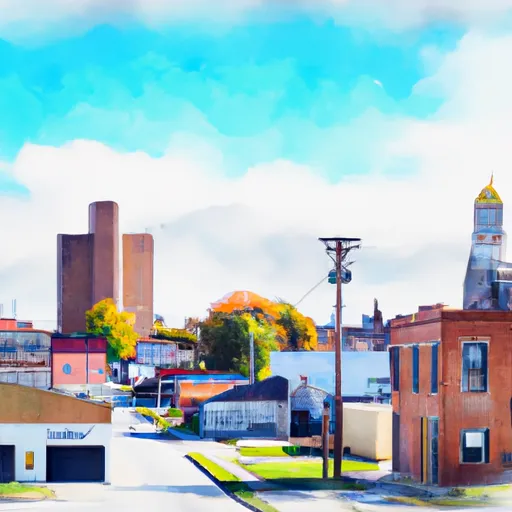-
 Snoflo Premium
Snoflo Premium
Get unlimited access to all our content
With no Ad interruptions! - Start Your Free Trial Login with existing account
Harlan
Eden Index
Climate
7.9
•
Recreation
2.8
•
Community
•
Safeguard
4.2/10

Harlan is a small town located in northeastern Indiana. The climate in Harlan is typical of the Midwest, with warm summers and cold winters. Precipitation is fairly evenly distributed throughout the year, with a slightly elevated amount during the summer months. The hydrology of Harlan consists of several small streams that flow into nearby rivers, including the Maumee and St. Joseph Rivers. The water quality in these streams is generally good, with low levels of pollutants. Outdoor recreation opportunities in Harlan include hiking, fishing, and hunting in the nearby forests and parks. Additionally, the town has a community park with a playground, picnic areas, and sports fields.
What is the Eden Index?
The Snoflo Eden Index serves as a comprehensive rating system for regions, evaluating their desirability through a holistic assessment of climate health, outdoor recreation opportunities, and natural disaster risk, acknowledging the profound impact of these factors on livability and well-being.
Climate Health Indicator (CHI): 7.9
Harlan receives approximately
943mm of rain per year,
with humidity levels near 82%
and air temperatures averaging around
10°C.
Harlan has a plant hardyness factor of
6, meaning
plants and agriculture in this region thrive during a short period during spring and early summer. Most
plants will die off during the colder winter months.
By considering the ideal temperature range, reliable water supplies, clean air, and stable seasonal rain or snowpacks, the Climate Health Indicator (CHI) underscores the significance of a healthy climate as the foundation for quality living.
A healthy climate is paramount for ensuring a high quality of life and livability in a region, fostering both physical well-being and environmental harmony. This can be characterized by ideal temperatures, reliable access to water supplies, clean air, and consistent seasonal rain or snowpacks.
Weather Forecast
Streamflow Conditions
Western Lake Erie
Area Rivers
Western Lake Erie
Snowpack Depths
Western Lake Erie
Reservoir Storage Capacity
Western Lake Erie
Groundwater Levels
Recreational Opportunity Index (ROI): 2.8
The Recreational Opportunity Index (ROI) recognizes the value of outdoor recreational options, such as parks, hiking trails, camping sites, and fishing spots, while acknowledging that climate plays a pivotal role in ensuring the comfort and consistency of these experiences.
Access to outdoor recreational opportunities, encompassing activities such as parks, hiking, camping, and fishing, is crucial for overall well-being, and the climate plays a pivotal role in enabling and enhancing these experiences, ensuring that individuals can engage in nature-based activities comfortably and consistently.
Camping Areas
| Campground | Campsites | Reservations | Toilets | Showers | Elevation |
|---|---|---|---|---|---|
| Mounds State Rec Area - Brookville Lake | 450 | 945 ft | |||
| Steuben County Park | None | 1,019 ft | |||
| Big Bone Lick State Park | 60 | 496 ft | |||
| Quakertown State Rec Area - Brookville Lake | 450 | 762 ft | |||
| Brookville Lake | 465 | 694 ft | |||
| Governor Bebb Preserve | None | 729 ft | |||
| Miami Whitewater Forest | 50 | 543 ft | |||
| Franklin County Park | None | 662 ft | |||
| Pokagon State Park | 275 | 1,026 ft | |||
| Bullock Pen Lake Ramp - DFWR | None | 774 ft |
Nearby Ski Areas
Catastrophe Safeguard Index (CSI):
The Catastrophe Safeguard Index (CSI) recognizes that natural disaster risk, encompassing floods, fires, hurricanes, and tornadoes, can drastically affect safety and the overall appeal of an area.
The level of natural disaster risk in a region significantly affects safety and the overall livability, with climate change amplifying these risks by potentially increasing the frequency and intensity of events like floods, fires, hurricanes, and tornadoes, thereby posing substantial challenges to community resilience and well-being.
Community Resilience Indicator (CRI):
The Community Resilience Indicator (CRI) recognizes that education, healthcare, and socioeconomics are crucial to the well-being of a region. The CRI acknowledges the profound impact of these elements on residents' overall quality of life. By evaluating educational resources, healthcare accessibility, and economic inclusivity, the index captures the essential aspects that contribute to a thriving community, fostering resident satisfaction, equity, and social cohesion.

